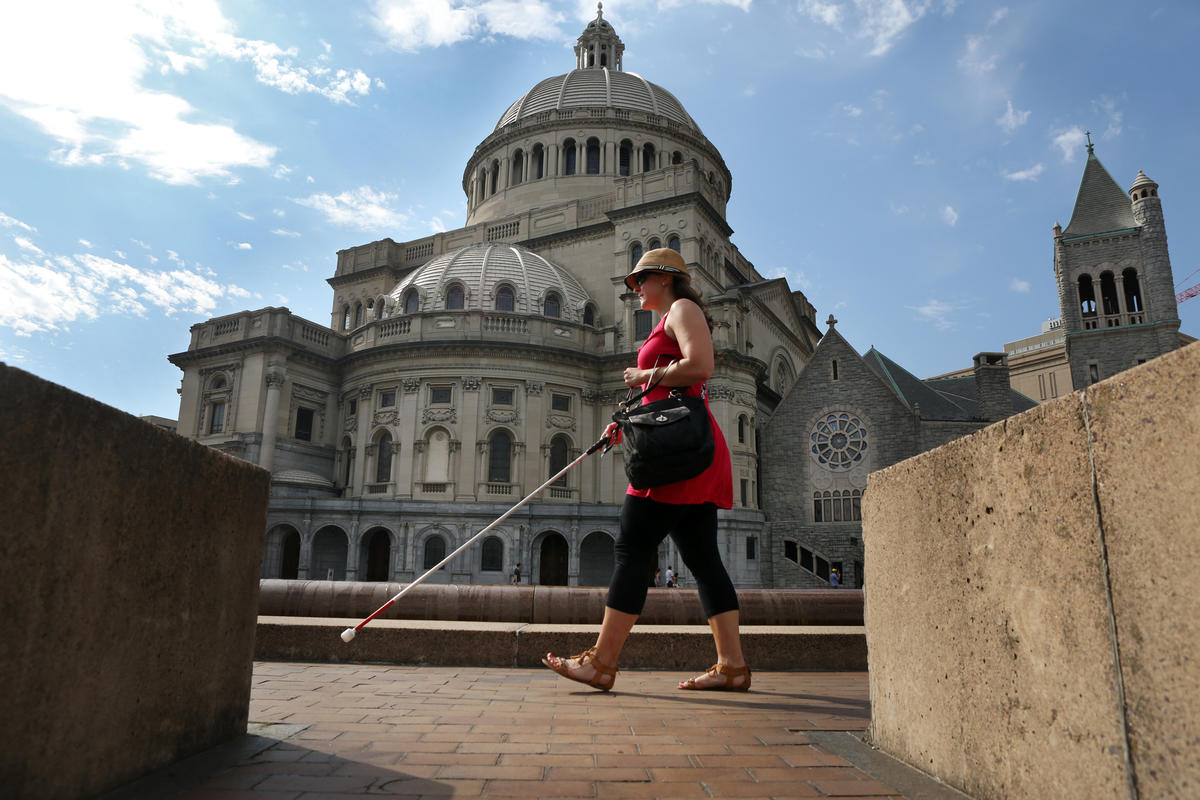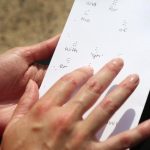
Dot by Dot, Step by Step – How Dance Helped Me Learn Braille
One does not associate braille with the world of dance but for as a dancer who is becoming blind, the two go hand in hand in helping me traverse this new stage in my life. Growing up Deaf in Louisiana, my communication skills included American Sign Language, spoken English, Cajun French, and lip reading.
Now, at this new stage of my life, I can no longer rely on my eyes to lip read and sign. This has brought me into a new realm of communicating – through touch. Technically, communicating through touch was not a new phenomenon for me, as I had already experienced “communicating by touch” through dance. Being the only Deaf dancer among my fellow dancers, dancing was an unspoken language we both could understand. Having this skill helped me as I began using tactile sign language. Though I was using touch to understand dance and sign language, it would still be some time before I approached the idea of learning braille.
Ironically, my braille journey began when one of my dance students from Silent Rhythms, Inc., a nonprofit to promote inclusion in the arts for people with disabilities, inspired me to learn braille. The student, Haben Girma, and I shared many similarities – both of us are DeafBlind and both of us went to Harvard yet it was dancing that brought us together. Haben introduced me to braille display technology in which braille can be read electronically – opening a world of possibilities for me to continue to read emails, to read the daily news, and to communicate with people in-person via the magic of a Bluetooth keyboard. I was now ready to take the first step and begin my braille journey.

Photo by Angela Rowlings.
There’s a reason why many children and adults with visual impairments use screen readers instead of braille, braille is very challenging while screen readers are quick and easy. Braille by touch is so challenging that many of those who teach braille actually cannot read braille by touch themselves, they can only read it by sight.
One might look at the entirety of Braille and think, this is impossible, I will never learn this. Those type of doubts sounded familiar to me. I have heard many first-time dance students watch professional dancers and say, this is impossible, I will never learn this. Some give up before they even take their first lesson. That is when I realized the tools that helped me learn to dance would come in handy as I learn braille. Below are some of the lessons that dance and braille has taught me.
You’re never too old or too young to learn something new
How often have I said this to people taking my dance class for the first time? Whether you are one or seventy, you can learn something new. In fact, the older one gets, the more important it is to learn something new to keep the brain sharp.
That’s what I told myself when I began my braille lessons. I had to stop myself from wishing I had learned when I was younger, instead I told myself to focus on the here and now. This was the age I was meant to begin. A perk of learning braille was that I noticed my brain retaining information better than before I began.
Trust touch
This was actually my first lesson in both dance and in braille. In dance, there are specific hold patterns, rapid turns, and intricate combinations. Without the right touch, you can miss a step or a turn. Many beginners in dance tend to grip their partner’s hands too hard (especially guys) and then there are the others who are afraid to touch another person’s hand. Eventually, one learns how to dance and stay connected with their partner with just the right amount of touch.
With braille, pressing your fingers down too hard or too soft makes it difficult to comprehend the embossed text. I admit, learning to find the right touch in dance was easier than finding the right touch in reading braille. I even resorted to using my fingernails to figure out how many dots there were. Fortunately for my dance partners, I have never used my fingernails while dancing. Just like dancing, finding the right touch in Braille takes time. One day, that touch will become a second nature.
Keep on the line
There is an invisible line that a dancer has to be on as they dance. In the “basic step”, you step forward with one foot ahead of the “line” then you take a back step behind the “line.” When dancers turn, they have to make sure they step forward just so, spot, turn, and be back in the original position. You can turn multiple times but you still need to stay “on the line.”
Braille, just like text, flows across a straight line. When you reach the end of the line, you move your fingers to the next line and find the beginning of the next line. Simple concept yet my fingers often do not cooperate. My fingers skim straight across the line then half-way through I either jump up to the previous line or jump down to the next line below. There is a trick, just like in dance, one “spots” by fixating on a specific point that helps you stay on track. If I remember that the first word at the beginning of the sentence was “At” then when I move my fingers down the line to the next line, I often get lost but if I find “At” I know that the sentence I am looking for is directly underneath.
Practice
Every teacher, no matter the subject, will emphasize the need to practice while every student will say they don’t have time. The last thing dance teachers say at the end of a dance class is be sure to practice before you come back to the next class.
My braille teacher emphasized, repeatedly, the importance of practicing. Of course, I had no time – I worked two full-time jobs, took and taught dance classes, and barely had time to spend with friends and family. I tried to practice before bed but I would always fall asleep with the braille book over my face. I took my gigantic braille book with me on my 40-minute subway commute only to get dirty looks by fellow passengers since I took up a lot of space. I tried to practice while eating lunch which is not ideal as it was difficult to distinguish a dot from a crumb.
Something I have done with both dance and braille is to make “cheat sheets” to break down something I just learned and then I keep reviewing it mentally. Another solution for me was to find a small Braille book that fit easily in my purse so I could easily practice on my commute. The other trick that helped was to “make an appointment” to practice. Same time, same day each week until it becomes a second nature. When there’s a will, there’s a way.
Don’t Give Up
Learning something new is not always easy and sometimes it can be downright frustrating when you feel like you are not making any progress. Do not give up. Focus on small wins – mastering a turn without crashing into a wall or learning that the letter “K” in braille alone is short for “knowledge.”
Here is one last piece of knowledge to share – dancing and reading braille are both skills. You are always learning something new no matter how advanced your skills may be. At some point, you will take notice of how far you have come and feel a sense of pride in what you have accomplished.
Every journey begins with a single step.
⠠⠑⠧⠑⠗⠽ ⠚⠕⠥⠗⠝⠑⠽ ⠃⠑⠛⠊⠝⠎ ⠺⠊⠞⠓ ⠼⠁ ⠎⠊⠝⠛⠇⠑ ⠎⠞⠑⠏
Kerry Thompson is the Founder & Executive Director for Silent Rhythms, Inc., a nonprofit organization dedicated to achieving inclusion in the arts while conversely using the arts to promote inclusion in society. She is a renowned dance instructor and has performed worldwide including in Paris and Havana. Kerry has taught more than 5,000 people with disabilities including those who are Deaf and DeafBlind as well as more than 10,000 people without disabilities over the last ten years. She has been featured in Boston Globe, Boston Herald, and ABC News’ More In Common. In addition, Kerry is also the Inclusion & Analytics Officer for the Disability Rights Fund where she has worked since 2008 to advance human rights and United Nations treaties for marginalized populations in the developing world. She is the co-author for Human Rights and Adolescence and has written several blogs. to revolutionize inclusion. She completed a Master’s degree in Human Development and Psychology from Harvard University with a focus on international law and human rights. She was named a 2014 Marshall Memorial Fellow and a 2016-2017 White House Fellowship Finalist.
Consider being part of empowering people with disabilities to take the first step, make a tax-deductible donation to Silent Rhythms, Inc.
DONATE